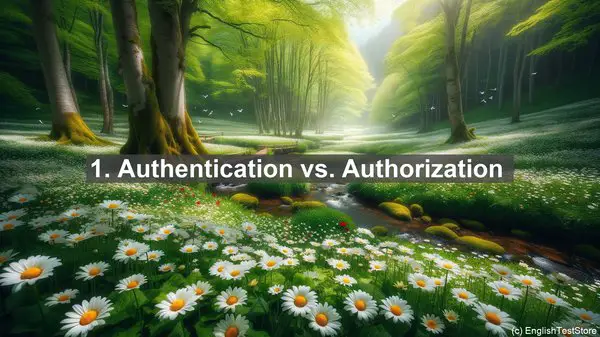Introduction
Today, we’re diving into the fascinating world of biometric technology. While it offers incredible advancements, there are some commonly confused words that can trip us up. Let’s explore them!

1. Authentication vs. Authorization
Authentication is the process of verifying a user’s identity, while authorization grants access to specific resources. Think of it as authentication being the ‘who are you?’ and authorization being the ‘what can you do?’
2. Accuracy vs. Precision
Accuracy refers to how close a measurement is to the true value, while precision relates to the consistency of repeated measurements. In biometric technology, accuracy is crucial for reliable identification, while precision ensures consistency.
3. Identification vs. Verification
Identification is the process of determining a person’s identity from a pool of possibilities, while verification confirms if a person is who they claim to be. Identification is like finding a needle in a haystack, while verification is a simple ‘yes’ or ‘no’ check.
4. False Acceptance vs. False Rejection
False acceptance occurs when an unauthorized person is granted access, while false rejection happens when an authorized person is denied access. Both can have serious consequences, making it crucial to balance security and convenience.
5. Template vs. Raw Biometric Data
Raw biometric data refers to the initial measurements taken, while a template is a condensed, secure representation of that data. Templates are used for comparison during authentication, ensuring privacy and security.
6. Active vs. Passive Biometrics
Active biometrics require user participation, like a fingerprint scan, while passive biometrics can be collected without the user’s knowledge, such as facial recognition in a crowd. Both have their unique applications and considerations.
7. Liveness Detection vs. Presentation Attack
Liveness detection aims to ensure that the biometric being presented is from a live person, not a fake or replayed sample. A presentation attack, on the other hand, involves using a counterfeit or altered biometric to deceive the system.
8. Biometric Enrollment vs. Registration
Enrollment is the initial process of capturing a user’s biometric data and creating their profile, while registration involves linking that biometric to their identity in a system. Both steps are essential for accurate and secure biometric usage.

9. Biometric Fusion vs. Multimodal Biometrics
Biometric fusion combines multiple biometric traits, like fingerprint and iris, to enhance accuracy. Multimodal biometrics, on the other hand, uses different biometric traits for different scenarios, like fingerprint for access and voice for authentication.
10. Biometric Spoofing vs. Anti-Spoofing
Biometric spoofing involves using fake or altered biometrics to deceive a system, while anti-spoofing techniques aim to detect and prevent such attacks. As technology advances, so do the methods used in both these areas.
